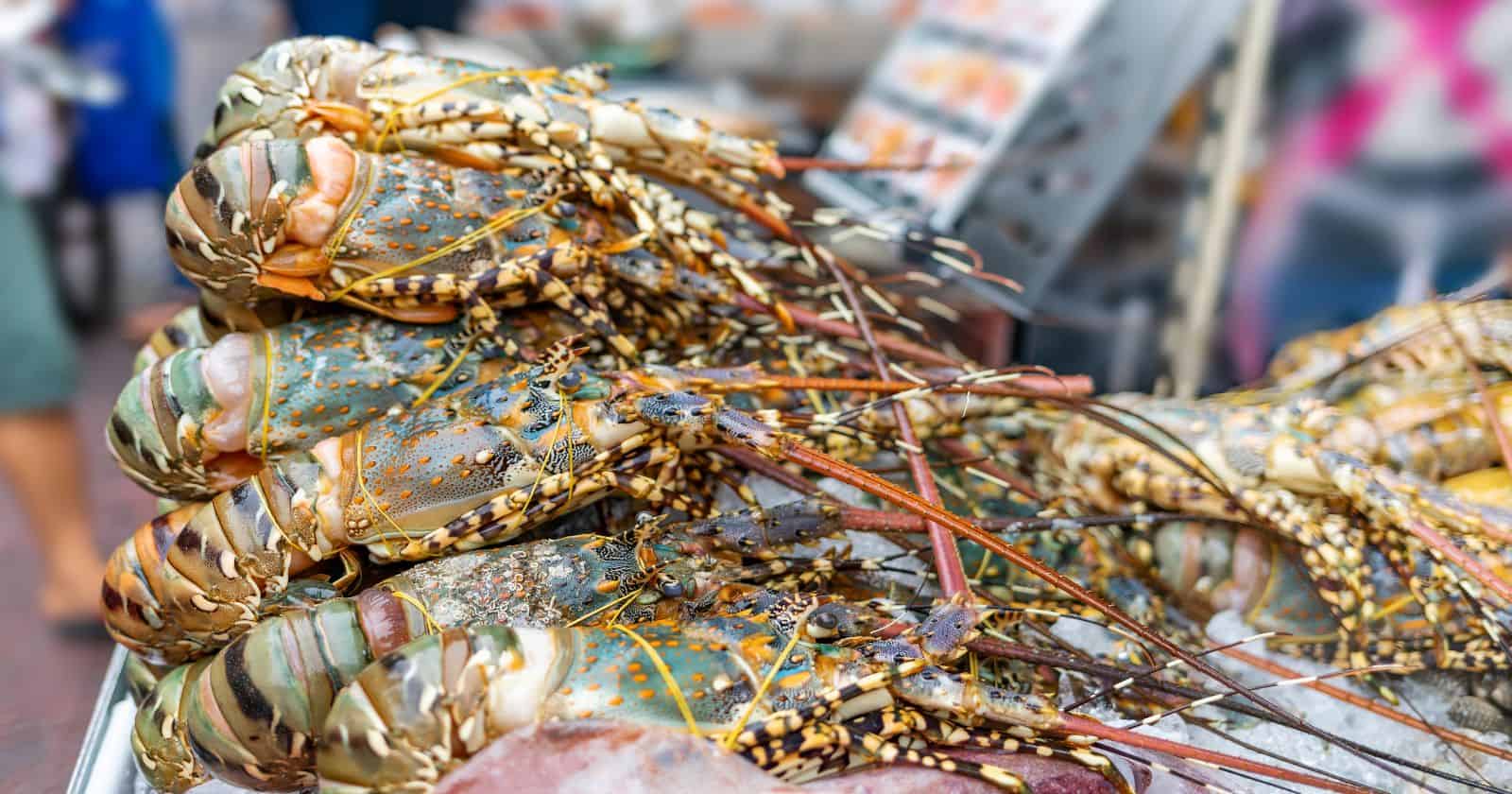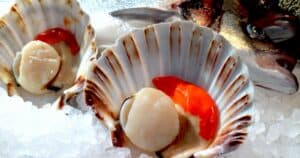Freezing lobster in milk can be a game-changer when it comes to preserving the texture and flavor of the meat. By preventing freezer burn and utilizing the lactic acid in milk, this technique helps to keep the lobster meat tender and moist during the freezing process.
To freeze lobster in milk, simply place the cooked lobster meat in a container, cover it completely with milk, seal the container, and freeze it until ready to use.
While freezing lobster in milk is a helpful technique, it’s not necessary. You can also freeze lobster meat without milk by placing it in a freezer bag, removing as much air as possible, and sealing it tightly. Thawing the meat in the refrigerator overnight or under cool running water works just as well.
In this blog post, we’ve discussed the benefits of freezing lobster in milk and provided an alternative freezing method. Whether you choose to freeze your lobster in milk or without it, the main goal is to preserve the quality and flavor of the meat.
The Benefits of Freezing Lobster in Milk
Freezing lobster in milk has been suggested as a way to reduce freezer burn and maintain the moistness and flavor of the meat. Soaking lobster meat in milk before freezing is believed to offer several benefits:
- Reduces freezer burn: Freezer burn occurs when moisture is lost from food during the freezing process. The milk acts as a barrier, helping to protect the lobster meat from drying out and forming ice crystals, reducing the chances of freezer burn.
- Preserves moisture: Lobster meat has a delicate texture and can easily dry out when frozen. By soaking it in milk, the meat retains its natural moisture, resulting in a tender and juicy texture when thawed.
- Adds creaminess: Milk imparts a creamy texture to the lobster meat, enhancing the overall taste and mouthfeel. This can make the lobster meat more enjoyable to consume, especially when used in dishes like bisques or pasta sauces.
However, it’s important to note that scientific evidence supporting these claims is limited. A study published in the National Center for Biotechnology Information found that the freezing method used can impact the quality of frozen lobster meat. While milk may help reduce freezer burn, it is not the only method available.
Other techniques for preserving the quality of frozen lobster meat include tightly wrapping it to remove air from the packaging and using cryoprotective solutions. These methods can also help maintain the moisture and flavor of the meat.
Understanding the Science behind Preservation
Food preservation is a scientific process that involves manipulating the conditions of food to slow down or kill disease-causing bacteria and microorganisms. There are several methods of food preservation, each with its own impact on the quality of the food and food systems.
The basic principles of food preservation involve reducing the enzyme activity and growth of microorganisms by manipulating conditions such as pH levels, moisture, and temperature.
When it comes to preserving food, one unique method is freezing lobster in milk. This method may seem unconventional, but it is based on scientific principles that ensure the lobster remains fresh and safe to eat. Here’s a closer look at the science behind this preservation technique:
- Temperature control: Freezing is a common method of food preservation as it slows down the activity of bacteria and microorganisms. By freezing lobster, the low temperature inhibits the growth of harmful bacteria, preventing spoilage and extending the shelf life of the lobster.
- Moisture retention: When lobster is frozen, ice crystals can form within the meat. These ice crystals can cause cell damage and alter the texture of the meat. By freezing the lobster in milk, the liquid acts as a protective barrier and helps retain moisture within the meat. This ensures that the lobster stays juicy and tender even after being thawed.
- Flavor preservation: Another benefit of freezing lobster in milk is the preservation of flavor. Milk contains natural enzymes and proteins that can enhance the flavor and tenderness of the meat. These components help to maintain the natural taste of the lobster during the freezing process.
While freezing lobster in milk may not be a commonly used preservation method, it demonstrates the scientific principles of temperature control, moisture retention, and flavor preservation. By understanding the science behind food preservation, we can explore innovative techniques to prolong the freshness and quality of our food.
Step-by-Step Guide to Freezing Lobster in Milk
Freezing lobster in milk is a technique that can help preserve the quality of the meat and reduce freezer burn. Here is a step-by-step guide on how to freeze lobster in milk:
- Cook the lobster meat: Begin by cooking the lobster meat according to your preferred method. Whether you boil, steam, or grill the lobster, ensure that the meat is fully cooked before proceeding.
- Chop or leave it whole: Once cooked, you have the option to either chop the lobster meat into smaller pieces or leave it whole. Choose whichever suits your preference and intended use of the meat when thawed.
- Place in a freezer bag: Transfer the cooked lobster meat into a freezer-safe bag. Ensure that the bag is large enough to comfortably hold the meat and any additional liquid.
- Pour milk or cream: Pour milk or cream into the bag, making sure that there is enough liquid to cover all the lobster meat. The milk acts as a protective layer and prevents the meat from drying out in the freezer.
- Remove air and seal: Squeeze out as much air as possible from the bag before sealing it. This step prevents freezer burn, which can negatively impact the taste and texture of the lobster meat.
- Label and date the bag: To keep track of the freezing date, label the bag with the current date. This will help ensure that you consume the lobster meat within the recommended storage time.
- Freeze the bag: Place the sealed bag in the freezer. Ensure it is placed in a spot where it won’t be crushed or disturbed by other items in the freezer.
Alternative Methods for Freezing Lobster Meat
Freezing cooked meat: The most common method for freezing lobster meat is to cook the lobster by steaming it, then pick the meat from the shell and place it in a freezer-safe bag. Adding a little milk to the bag helps keep the meat moist.
Gas or quick freezing: Another alternative method is using nitrogen to quickly freeze the lobster meat. This super-fast freezing method prevents dehydration and weight loss during the freezing process.
Immersion in super cold brine: Lobster can also be frozen by immersing it in super cold brine. This method, known as immersion freezing, helps preserve the quality and freshness of the meat.
Blast freezing: For freezing lobster in the shell, blast freezing is commonly used. The lobster is placed in a blast freezer, which quickly freezes it and helps maintain the quality of the meat.
Vacuum sealing: To prevent freezer burn and extend the shelf life of the lobster meat, it can be vacuum-sealed before freezing.
It is important to note that before freezing lobster meat, the freezer should be in good running condition and holding steady at 0 degrees Fahrenheit. Removing as much air as possible from the freezer-safe bag before sealing it also helps maintain the quality of the meat.
Thawing Techniques for Frozen Lobster Meat
Thawing frozen lobster meat can be done using various methods to ensure safe and delicious results. Here are three effective techniques:
- Refrigerator Method: This is the safest and most recommended way to thaw lobster meat. Simply place the frozen lobster meat in the refrigerator overnight or for about 24 hours. The exact thawing time may vary depending on the amount of meat. This method ensures a slow and even thaw, preserving the quality and texture of the meat.
- Cold Water Method: If you’re short on time, the cold water method can be used. Seal the frozen lobster meat in a plastic bag and submerge it in a bowl of cold water. It is important to change the water every 30 minutes to keep it cold. Thawing time can take approximately an hour or two, depending on the quantity of meat.
- Microwave Method: Using the defrost setting on the microwave is another quick option. However, caution must be exercised to avoid overcooking the lobster meat, which can result in a rubbery and tough texture. It is recommended to monitor the microwave closely and check the meat frequently during the defrosting process.
Remember, once the lobster meat is thawed, it should be used immediately or cooked and consumed within a day or two. Refreezing thawed lobster meat can lead to a loss in quality and flavor.





